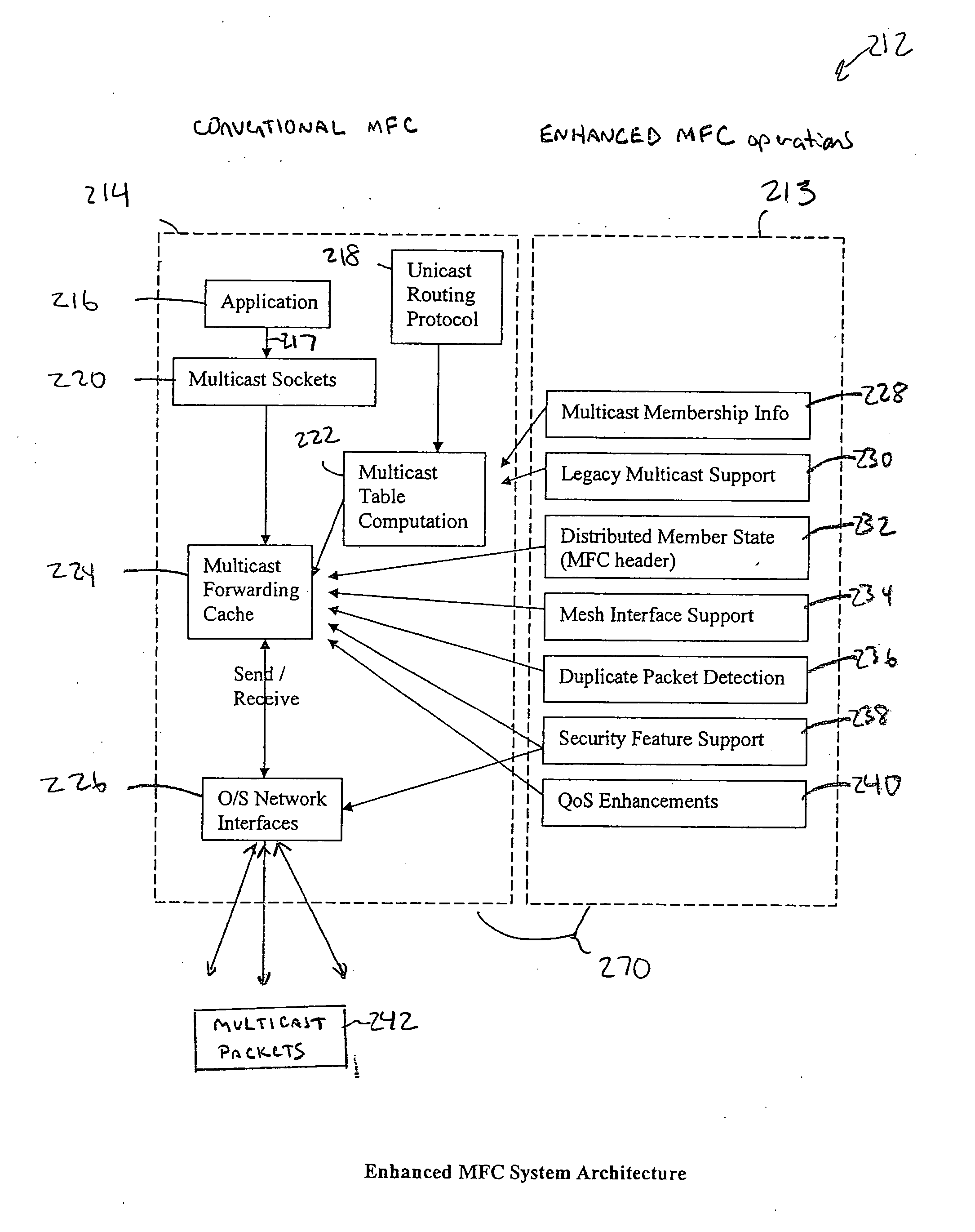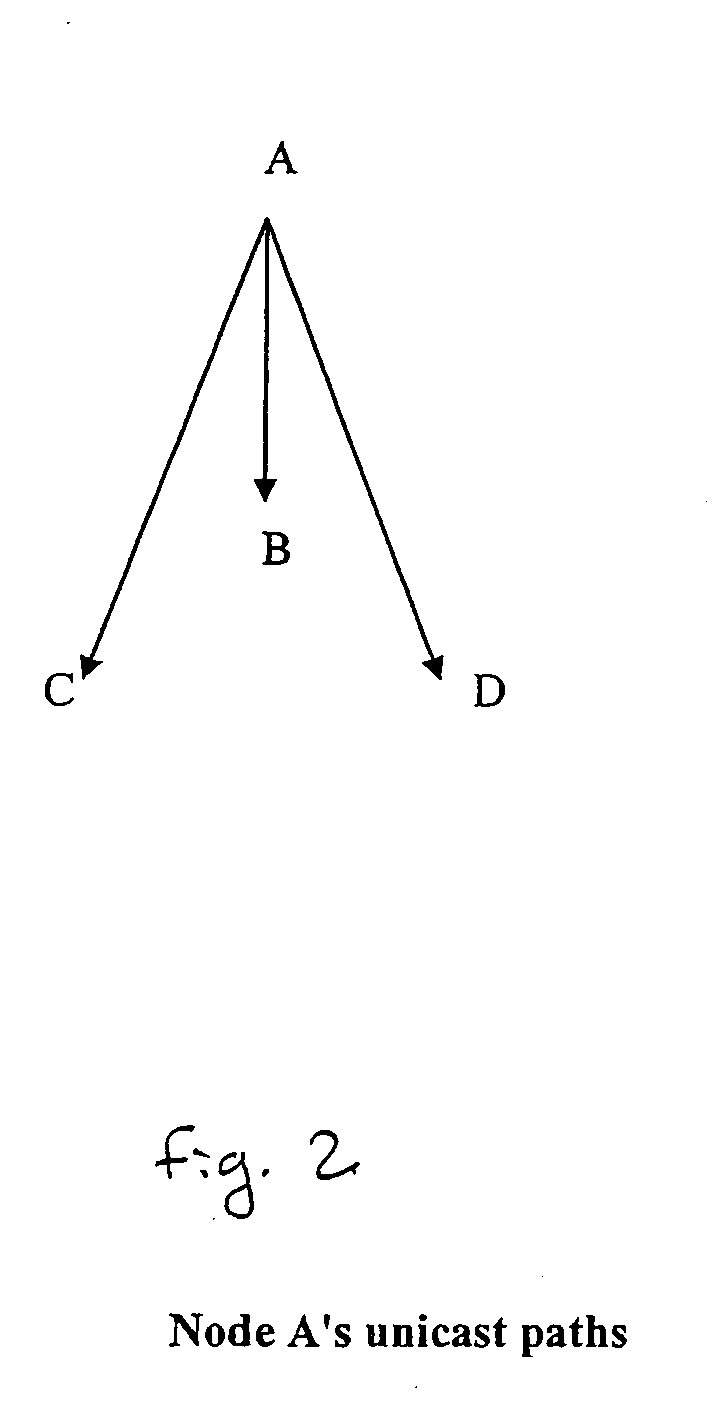Enhanced multicast forwarding cache (eMFC)
a forwarding cache and multicast technology, applied in multiplex communication, digital transmission, data switching networks, etc., can solve the problems of inability of all mesh nodes to hear each other's traffic, conventional multicast forward caches do not support either changing ip addresses or interfaces
- Summary
- Abstract
- Description
- Claims
- Application Information
AI Technical Summary
Benefits of technology
Problems solved by technology
Method used
Image
Examples
Embodiment Construction
[0036] Referring to FIG. 5, an Enhanced MFC (eMFC) system architecture 212 is a distributed multicast routing mechanism and consists of a multicast forwarding cache 224 and a multicast table computation 222. These two components derive information from global and local states available on a mesh node to properly route multicast traffic. All of the nodes running the enhanced MFC 212 create an overlay network over both mobile mesh networks and conventional Internet Protocol (IP) based networks.
[0037]FIG. 5 shows a node 270 that operates the enhanced MFC 212 in a mesh network. Multicast aware applications 216 use socket application program interface (API) calls 217 to open a multicast socket 220, declare itself as a multicast source, set the multicast data type (e.g. video, voice, bulk data, and so forth), send multicast data 242, receive multicast data 242, and close the socket 220. These socket calls 217 rely on the underlying multicast forwarding cache 224 to select the zero or mor...
PUM
 Login to View More
Login to View More Abstract
Description
Claims
Application Information
 Login to View More
Login to View More - R&D
- Intellectual Property
- Life Sciences
- Materials
- Tech Scout
- Unparalleled Data Quality
- Higher Quality Content
- 60% Fewer Hallucinations
Browse by: Latest US Patents, China's latest patents, Technical Efficacy Thesaurus, Application Domain, Technology Topic, Popular Technical Reports.
© 2025 PatSnap. All rights reserved.Legal|Privacy policy|Modern Slavery Act Transparency Statement|Sitemap|About US| Contact US: help@patsnap.com



